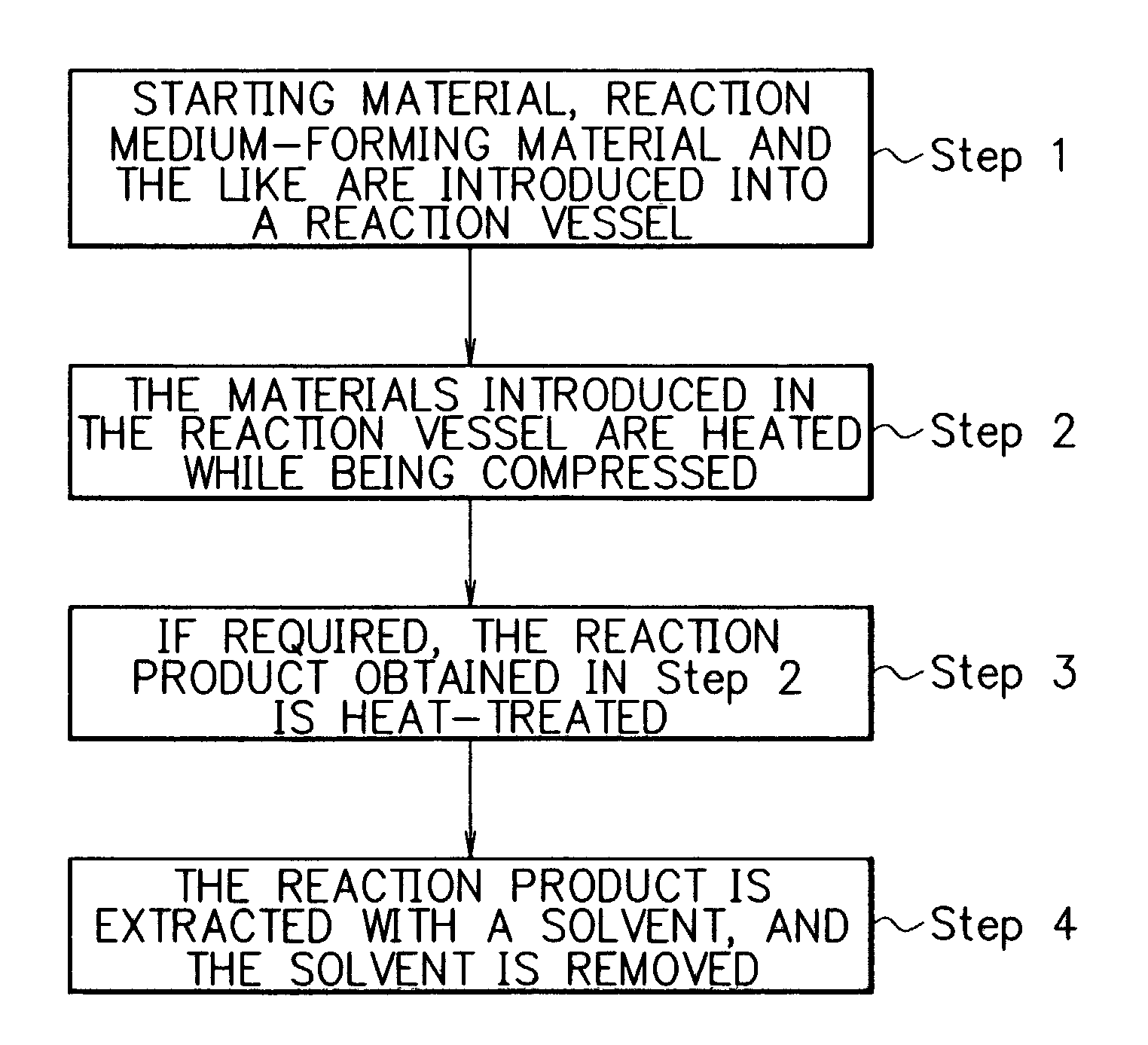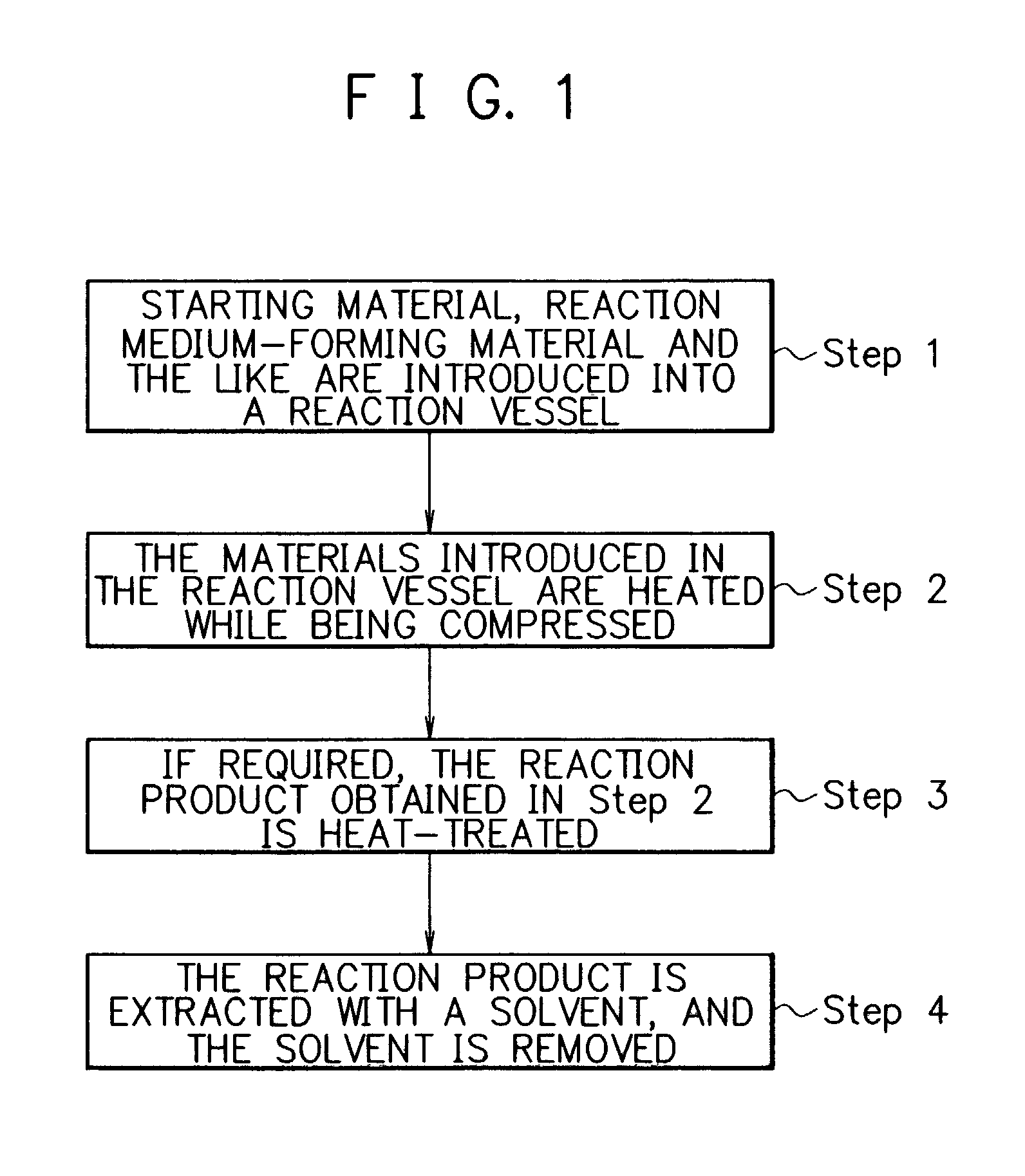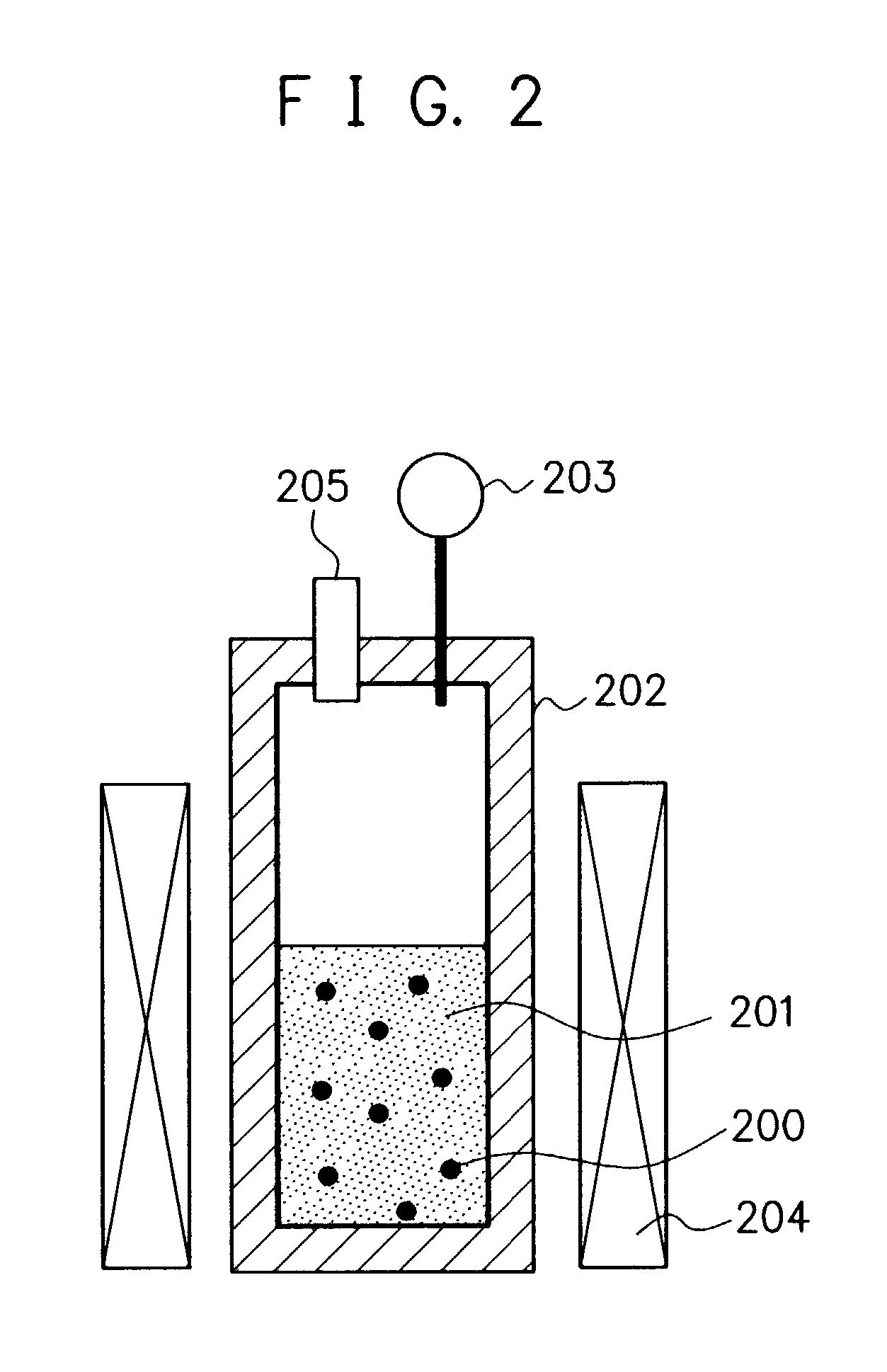Method for producing fullerenes
a fullerene and production method technology, applied in the field of fullerene production methods, can solve the problems of difficult quantitative production of fullerenes at a reasonable production cost, low yield, etc., and achieve the effect of simple production method and low cos
- Summary
- Abstract
- Description
- Claims
- Application Information
AI Technical Summary
Benefits of technology
Problems solved by technology
Method used
Image
Examples
example 1
[0071]Into the reaction vessel 202 (made of a Ni—Mo alloy) of the reaction apparatus shown in FIG. 2, 2 g of naphthalene (the critical temperature: 475° C.; the critical pressure: 4.11 MPa) as the starting material 200, 0.2 g of ferric chloride (FeCl3) as a catalyst, 2 g of ethanol (the critical temperature: 243° C.; the critical pressure: 6.38 MPa) as a solvent for said ferric chloride, and 80 g of a dryice CO2 (the critical temperature: 31° C.; the critical pressure: 7.38 MPa) as the reaction medium-forming material 201 were introduced, and they were subjected to reaction at 300° C. under pressure condition of 12 MPa for 6 hours to obtain a reaction product. The resultant reaction product was subjected to an extraction treatment with toluene to obtain an extracted reaction product.
[0072]A sample of the extracted reaction product was diluted with toluene to 200 times to obtain a toluene solution. The toluene solution was subjected to analysis by a high performance liquid chromatogr...
example 2
[0074]The procedures of Example 1 were repeated, except that 0.2 g of ferrocene was added in addition to the ferric chloride as the catalyst, to obtain a reaction product. The reaction product was subjected to an extraction treatment with toluene to obtain an extracted reaction product.
[0075]As well as in Example 1, a sample of the extracted reaction product was subjected to analysis by the high performance liquid chromatography. As a result, there were observed a peak corresponding to unreacted naphthalene and a peak at a position in agreement with the retention time previously measured by a fullerene C60 toluene solution.
example 3
[0076]The procedures of Example 1 were repeated, except that the ferric chloride was not used and the reaction temperature was changed to 400° C., to obtain a reaction product. The reaction product was subjected to an extraction treatment with toluene to obtain an extracted reaction product.
[0077]As well as in Example 1, a sample of the extracted reaction product was subjected to analysis by the high performance liquid chromatography. As a result, there were observed a peak corresponding to unreacted naphthalene and a peak at a position in agreement with the retention time previously measured by a fullerene C60 toluene solution.
PUM
| Property | Measurement | Unit |
|---|---|---|
| pressure | aaaaa | aaaaa |
| temperature | aaaaa | aaaaa |
| temperature | aaaaa | aaaaa |
Abstract
Description
Claims
Application Information
 Login to View More
Login to View More - R&D
- Intellectual Property
- Life Sciences
- Materials
- Tech Scout
- Unparalleled Data Quality
- Higher Quality Content
- 60% Fewer Hallucinations
Browse by: Latest US Patents, China's latest patents, Technical Efficacy Thesaurus, Application Domain, Technology Topic, Popular Technical Reports.
© 2025 PatSnap. All rights reserved.Legal|Privacy policy|Modern Slavery Act Transparency Statement|Sitemap|About US| Contact US: help@patsnap.com



